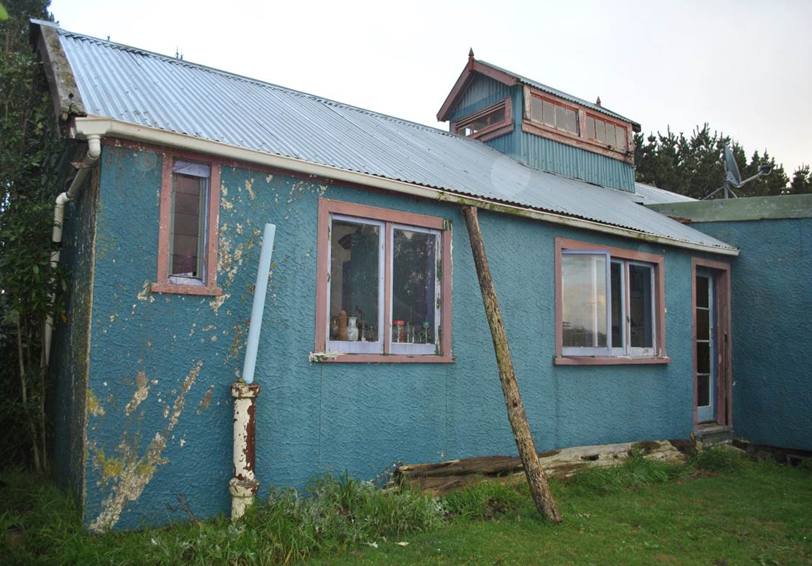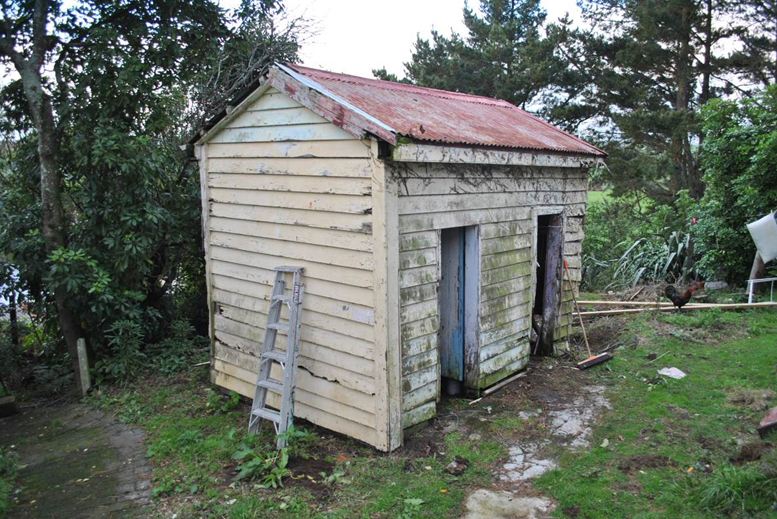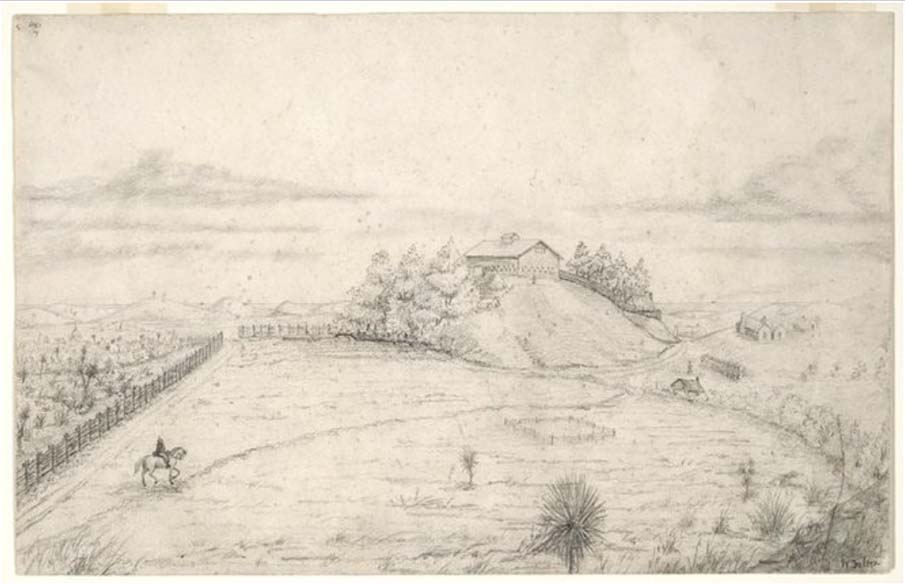The Pungarehu Blockhouse is a rare and significant historical structure, remaining in its original location from the Taranaki Land Wars. This particular military structure is perhaps even more remarkable in that it has been adapted for use as a dwelling since being decommissioned as a blockhouse, but still retains original features and character. The blockhouse also marks the site of the Pungarehu Armed Constabulary Camp (PACC) which played a key role in the now infamous occupation of Parihaka by the Armed Constabulary in November 1881. Parihaka was an influential Taranaki Māori settlement established by the Taranaki prophets Te Whiti-O-Rongomai III and Tohu Kākahi, who led a campaign of peaceful resistance to the government surveying of the confiscated southern Taranaki lands. The Pungarehu Blockhouse was constructed in 1881, following the establishment of the camp in 1880. The blockhouse was never under attack; its key role in the Parihaka campaign was being used as temporary jail cell for Te Whiti-O-Rongomai and Tohu Kākahi. The blockhouse was also the scene of the suicide of Richard Madigan A/C in 1882, the only loss of life incurred by the armed constabulary during the Parihaka campaign. The Pungarehu garrison was gradually diminished following the arrest of Te Whiti and Tohu and eventually the blockhouse was turned over to the civilian police in 1885. Major (later Colonel) J.M. Roberts’ (Field commander of the Armed Constabulary and Militia during the Parihaka Campaign ) correspondence gives the following details about the Pungarehu Blockhouse: ‘Inside measurements […] forty feet six inches by eighteen feet; height of walls eight feet six inches; will hold twenty-five men comfortably; about nine thousand feet of timber used in building of carpenters Sergt Forbes who superintended and Constable John Lyle.’ The timber for the blockhouse came from Inglewood at a cost of £53. Gravel was used within the walls to make it ball-proof. The blockhouse has the unusual design feature of a central roofed turret with clerestory glass windows on four sides, allowing the constabulary to maintain a watch from within the building. The blockhouse represents only one element of what was once the much larger Armed Constabulary Camp at Pungarehu, initially occupied by No’s four, five and six Armed Constabulary companies on June 21, 1880. However this garrison was quickly reinforced by a build up of Armed Constabulary and volunteer forces from throughout New Zealand for the advance on Parihaka in November 1881. The PAAC, capable of accommodating at least 500 troops, included officer’s and soldier’s quarters; rifle ranges; stables; a telegraph office; canteens; two wells; a quarry; and another small guard redoubt on the western side the current SH45. Early nineteenth century photography and contemporary sketch drawings show the blockhouse was originally a single rectangular timber-clad structure, with rifle slits in the walls and attic-level windows at each end. Sometime after the blockhouse was turned over to the New Zealand Police in 1885, the exterior walls with rifle slits were removed, the shingle removed from the cavity, the building re-clad in weatherboard, and windows were added to the walls. The interior walls and ceiling were match-lined and a fireplace was added on the south western side. The original blockhouse interior has been divided into rooms accessed by a hallway along the northern side to facilitate the later use as a police station and civilian dwelling. The attic level windows were removed following further alterations undertaken prior to 1950. The latest alterations to the blockhouse, post-1950, resulted in the exterior being clad with stuccoed fibrolite board, although the skylight remains clad in the original iron. The match-lined interior of the structure was overlaid with Pinex board and the addition of a kitchen area at the north western end of the building replaced an earlier extension on the western end. The blockhouse has also been partially re-piled and the floorboards date to the original blockhouse. A two-celled jail was built during the use of the site by the New Zealand Police after 1885 and is still standing outside the blockhouse to the north. The structure is now only a single room; the mortised central beam is still visible in the rafters, testament to the dividing wall since removed. The building has two doorways on the southern side and an original, two inch thick cell door still hangs on the western entrance. The jail remains clad in its original weatherboard; however the southeast corner was recently damaged during the removal of a large bamboo plant. The former Pungarehu Armed Constabulary Camp has been significantly affected by the development of the area for residential purposes since the site was first described by Prickett as ‘largely untouched’ in 1976. Much of the site has now been redeveloped as residential housing and gardens. The hill containing the blockhouse has been significantly modified; large pine trees have been planted and driveways installed. Unaffected archaeological remains may still exist in the paddocks to the north of the blockhouse and surrounding the guard redoubt on the western side of State Highway 45.



Location
List Entry Information
Overview
Detailed List Entry
Status
Listed
List Entry Status
Historic Place Category 2
Access
Private/No Public Access
List Number
818
Date Entered
9th September 1983
Date of Effect
9th September 1983
City/District Council
South Taranaki District
Region
Taranaki Region
Extent of List Entry
Extent includes the land described as Lot 1 DP 13833 (RT TNF3/1299), Taranaki Land District and the building known as Pungarehu Blockhouse thereon, and the former jail cell. Extent does not include the other buildings on the property.
Legal description
Lot 1 DP 13833 (RT TNF3/1299), Taranaki Land District
Stay up to date with Heritage this month
